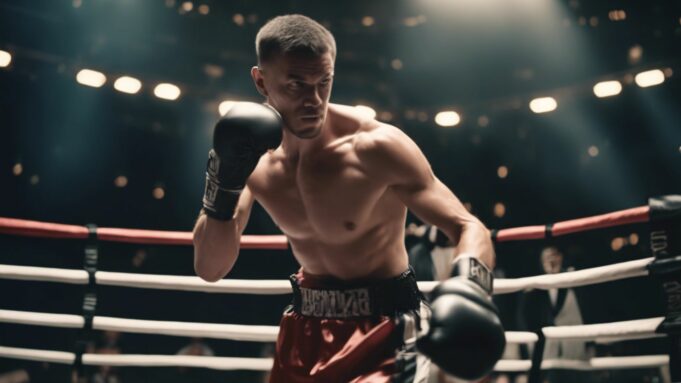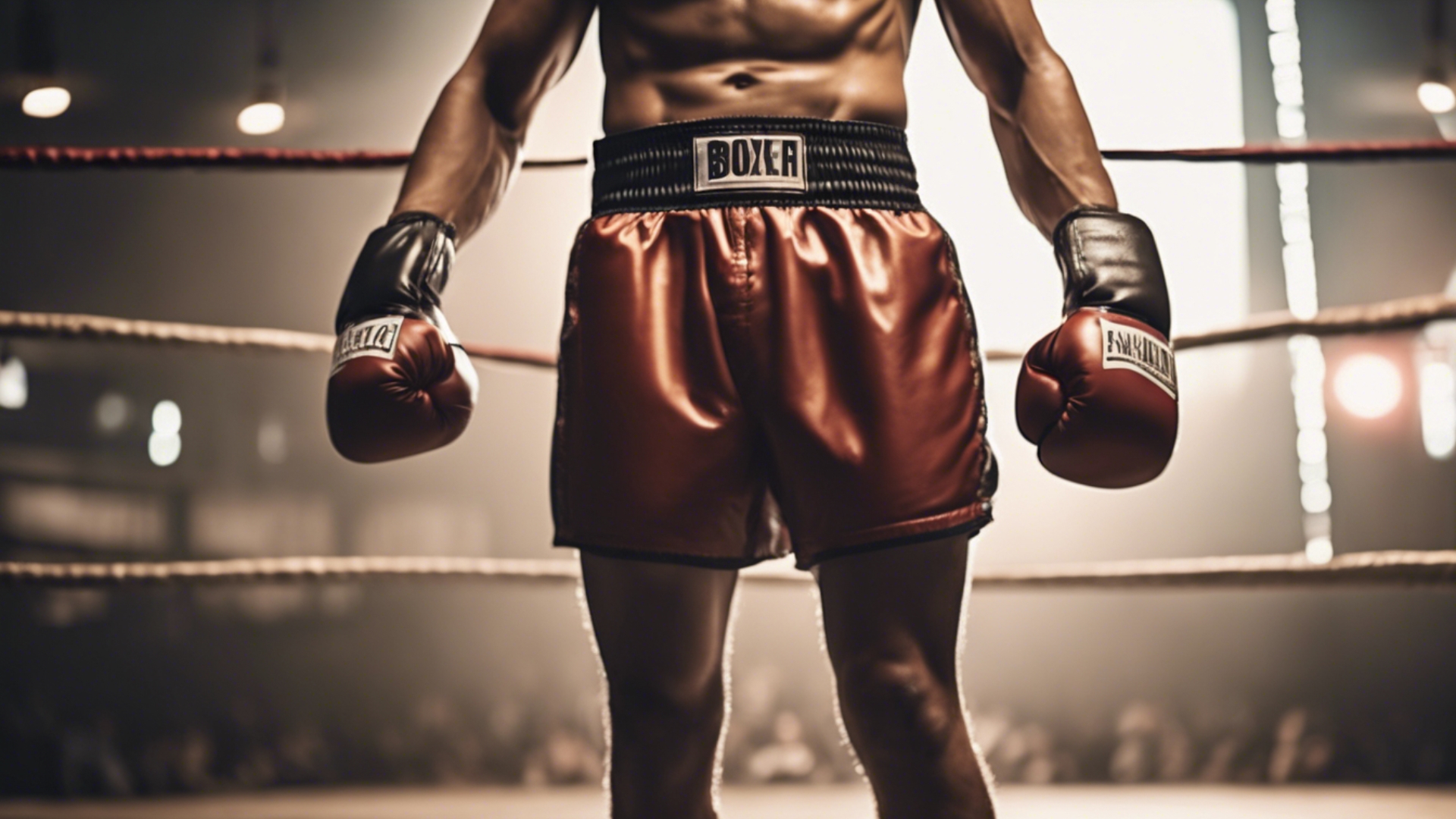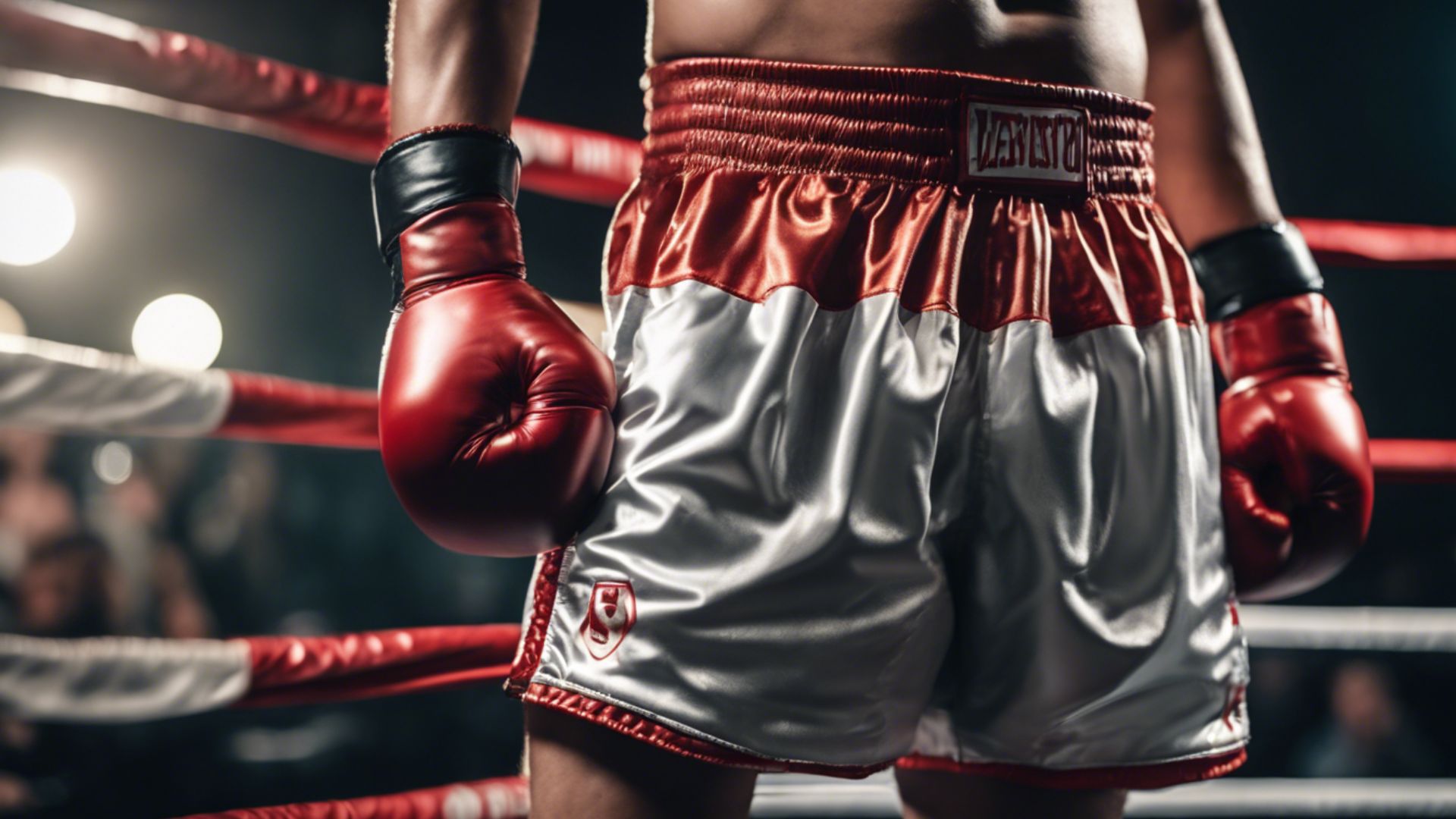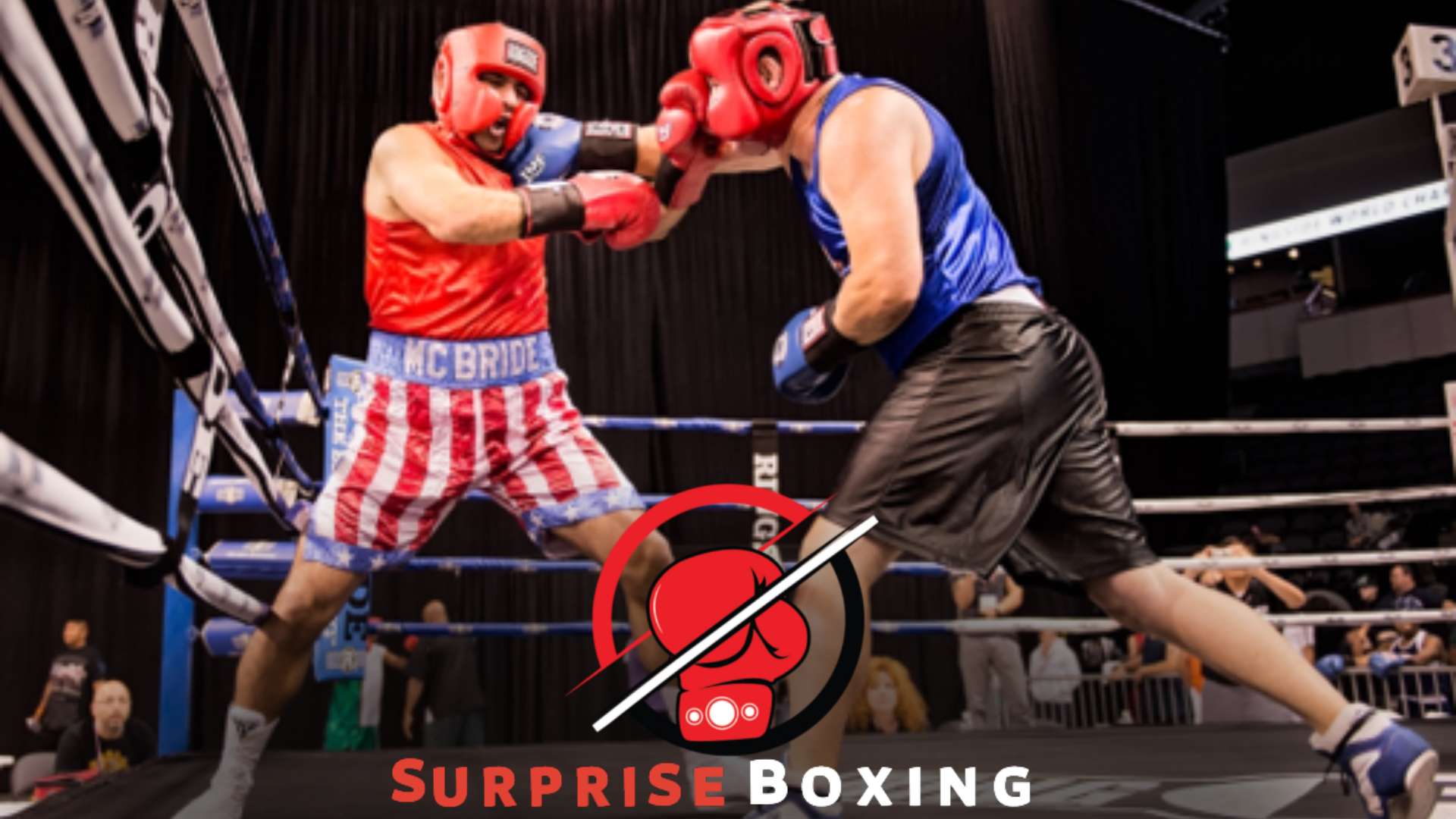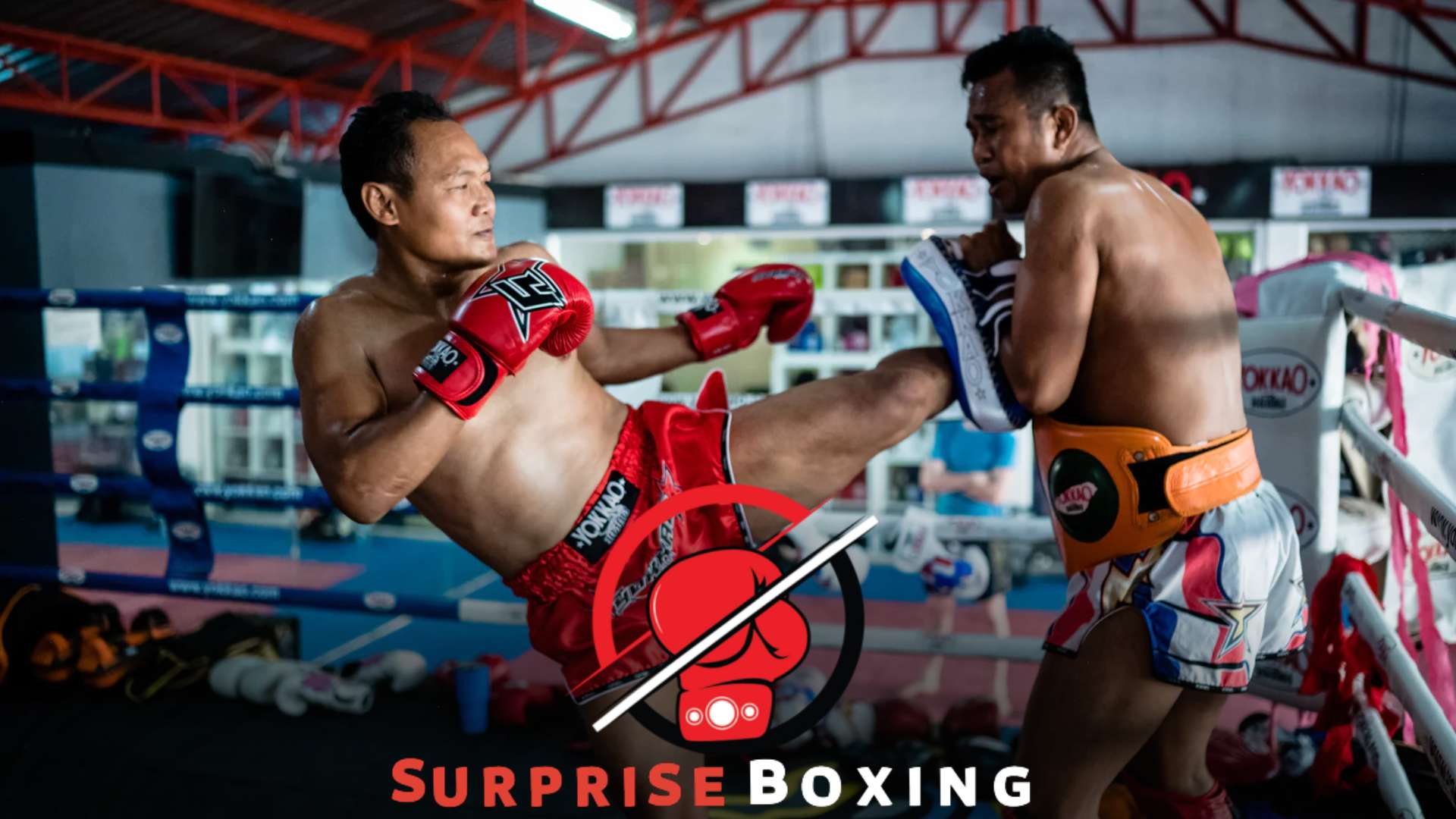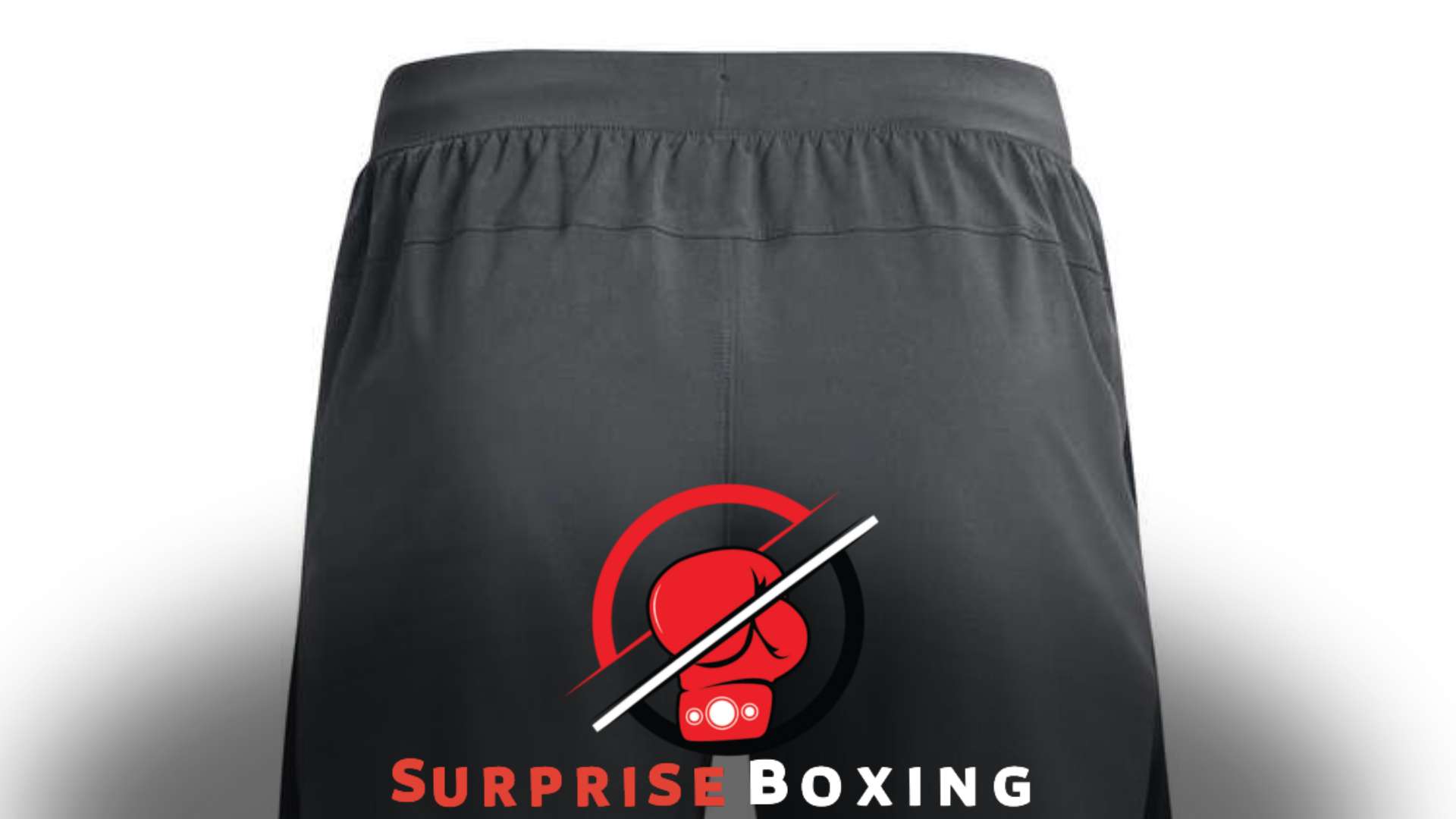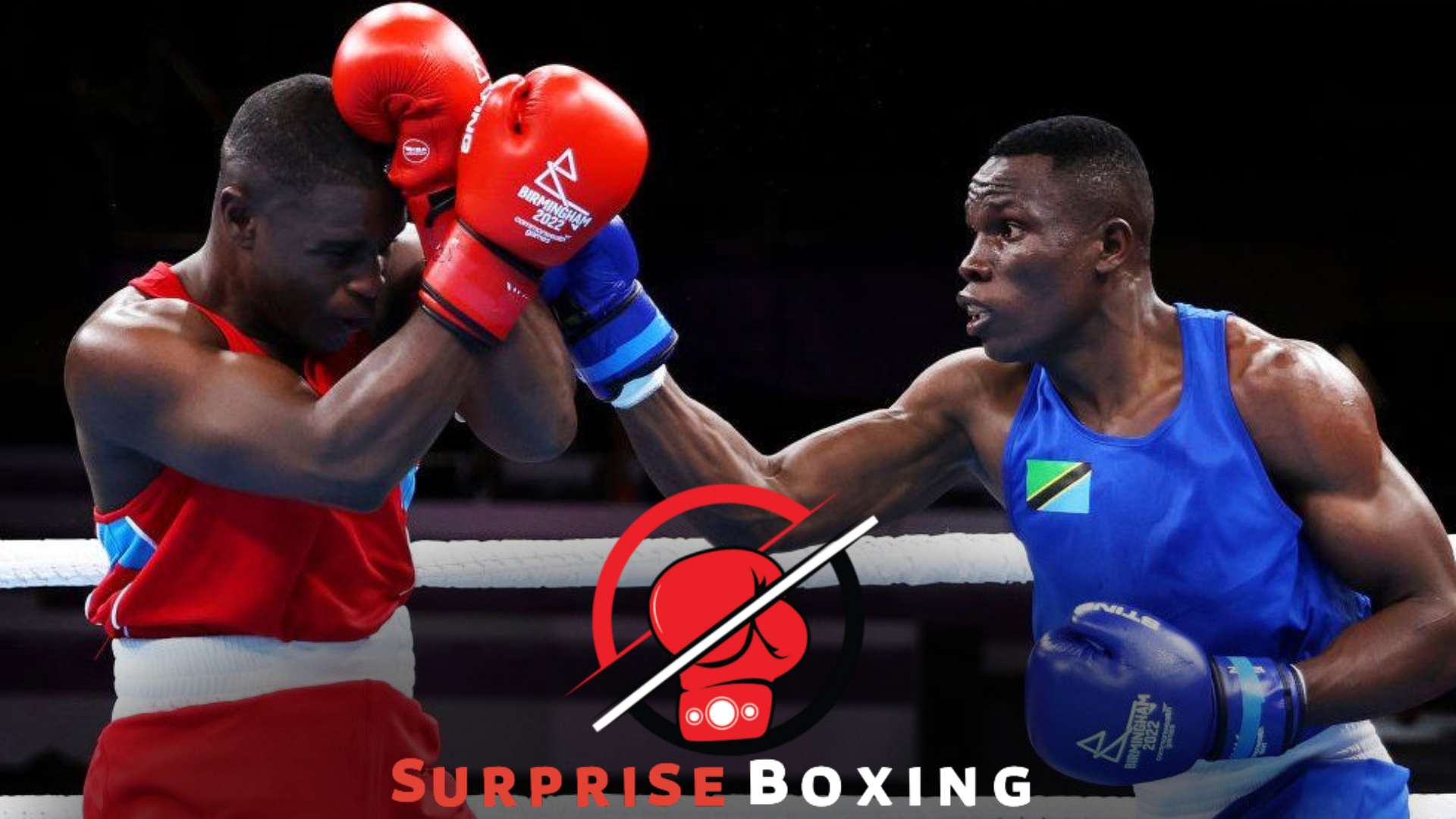Boxing is beneficial for short guys as it enhances strength, agility, and self-defense skills. Additionally, it boosts confidence and promotes cardiovascular health.
Boxing provides a comprehensive workout that improves overall fitness, coordination, and reflexes, making it an ideal sport for short individuals looking to enhance their physical abilities.
The combination of punching, footwork, and defensive techniques in boxing helps short guys overcome potential disadvantages, allowing them to excel in the ring.
Furthermore, boxing training focuses on speed and quickness, which can benefit shorter individuals.
B boxing is an excellent choice for short guys looking to stay fit and develop combat skills.
The Physical Demands and Challenges of Boxing
Boxing imposes intense physical demands and challenges, which may benefit short guys. The sport enhances agility, speed, and footwork, allowing shorter individuals to excel in quick movements and exploiting their opponents’ weaknesses.
It allows them to showcase their power and skills, proving that size doesn’t always determine success in the ring.
Boxing is often celebrated for its ability to cultivate discipline, strength, and resilience. However, it’s natural to question whether this sport suits short guys. Will their height hinder their performance in the ring?
This section will delve into the physical demands and challenges that short guys may encounter in boxing.
Height and Reach Disadvantages
- Limited reach: Shorter individuals may have shorter arm lengths, which can reduce their punching range.
- Difficulty closing the distance: Shorter boxers may face challenges getting close to their opponents due to their limited reach.
Agility and Speed Advantage
- Enhanced agility: Shorter boxers often possess greater agility, allowing them to navigate opponents’ punches swiftly.
- Increased speed: With a lower center of gravity, shorter individuals can generate quick movements, enabling them to dodge attacks effectively.
Power and Compactness
- Compact build: Short boxers tend to have a more compact build, which can offer advantages in terms of stability and balance.
- Strong punching power: Their shorter arms can generate more power at close range, making up for any reach disadvantage.
Defensive Techniques
- Slipping and bobbing: Shorter boxers usually find it easier to bob and weave, falling under an opponent’s punches with quick head movements.
- Infighting proficiency: Their natural build and close-range power make shorter boxers adept at infighting, using tight and powerful punches from a close distance.
Footwork and Maneuverability
- Agile footwork: Short boxers often possess rapid footwork, enabling them to pivot, change directions, and create advantageous angles swiftly.
- Enhanced maneuverability: With a lower center of gravity, shorter fighters can transition seamlessly between offensive and defensive stances.
Mindset and Determination
- Mental toughness: Short fighters may develop exceptional mental resilience, compensating for physical disadvantages through sheer grit and determination.
- Overcoming obstacles: The challenges inherent in boxing can fuel a strong desire to prove oneself, motivating shorter individuals to exceed expectations.
Ultimately, while the physical demands of boxing present unique challenges for short guys, their inherent attributes, such as agility, compactness, and determination, can help level the playing field.
It’s important to remember that success in boxing is not solely determined by height.
Rather, the combination of skill, strategy, and an unwavering commitment to improvement truly defines a fighter’s journey.
Advantages of Boxing for Short Individuals
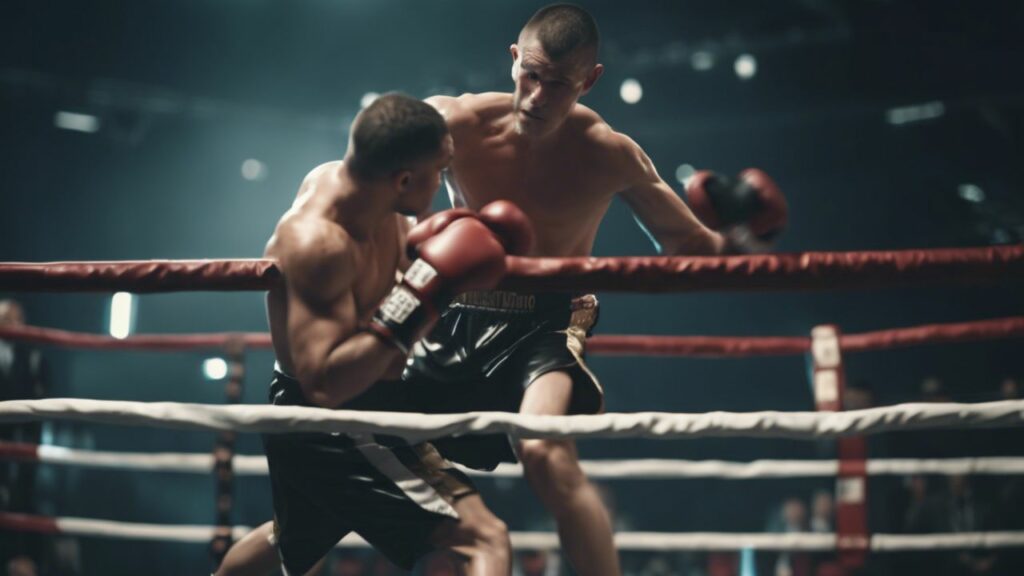
Short individuals can leverage their speed, agility, and defensive prowess in boxing, making it an ideal sport for shorter guys. With the ability to move quickly and dodge punches effectively, boxing offers advantages that can level the playing field for shorter individuals.
Boxing is often perceived as ideal for tall, slim individuals with long-reach advantages. However, being short shouldn’t deter you from stepping into the ring.
Boxing offers several advantages for shorter individuals, allowing them to use their unique attributes to excel in the sport.
Let’s explore the advantages that boxing brings for short guys:
1. Swift and Agile Footwork
- Quick footwork is essential in boxing, and shorter individuals have an advantage.
- Their shorter stature enables them to move around the ring with agility, making it easier to change directions rapidly and evade opponents’ attacks.
- Short guys can use their swift footwork to close the distance between themselves and taller opponents, making it more challenging for them to land powerful punches.
2. Heightened Speed
- Shorter individuals often possess a greater speed advantage due to their lighter body weight and compact size.
- Their ability to generate rapid punches enables them to overwhelm opponents with flurries of strikes before they can react.
- The increased speed allows short boxers to exploit openings in their opponents’ defense, landing effective combinations while avoiding counterattacks.
3. Enhanced Defensive Prowess
- Being shorter in stature provides shorter individuals with a smaller target for opponents to hit, making it easier to defend against punches.
- They can employ a low, compact guard, minimizing the chances of getting hit with power shots.
- Additionally, shorter boxers tend to have excellent head and body movement, enabling them to slip punches and bob and weave effectively to avoid taking heavy blows.
4. Inside Fighting Advantage
- Shorter boxers often excel in close-quarter combat due to their compact build and ability to generate power from close range.
- They can work on the inside, utilizing their shorter reach to deliver devastating body shots and hooks that can weaken opponents.
- Inside fighting allows short individuals to neutralize the reach advantage of taller opponents, staying in their comfort zone where they can unleash their power.
5. Increased Psychological Edge
- Taller opponents may underestimate shorter boxers, assuming their height provides a significant advantage.
- However, short individuals can use this psychological advantage to surprise their opponents with speed, agility, and defensive prowess.
- By consistently outmaneuvering and frustrating taller opponents, short boxers can disrupt their opponents’ game plan and gain a mental edge, leading to increased confidence and better performance in the ring.
Embracing the advantages that boxing offers to short individuals can level the playing field and enable them to excel in the sport.
By leveraging their speed, agility, and defensive prowess, short guys can overcome height disadvantages and make a name for themselves in the boxing ring.
So, if you’re a short aspiring boxer, don’t hesitate to lace up your gloves and step into the squared circle.
Considerations and Strategies for Short Individuals in the World of Boxing
Boxing can be advantageous for shorter individuals, as they can utilize strategies such as staying low, focusing on speed and agility, and targeting the body instead of the head.
By employing these techniques, short guys can excel in boxing.
Being shorter in stature can pose particular challenges in the world of boxing. However, short individuals can excel in this sport and achieve remarkable success with the proper considerations and strategies.
This section will explore critical aspects that should be considered and provide practical strategies for short guys in boxing.
Understanding Your Physical Attributes
Short guys in boxing need to understand and embrace their unique physical attributes.
Here are some essential factors to consider:
- Lower center of gravity: Shorter individuals have a lower center of gravity, providing them with a stable base and increased balance during a boxing match
- Faster speed: Shorter boxers often have quicker footwork and agility due to their shorter limbs, allowing them to move swiftly in the ring
- Bobbing and weaving advantage: A shorter stature can be advantageous for ducking and weaving, making it harder for opponents to land punches
Maximizing Your Strengths
Short individuals can maximize their strengths in boxing with the following strategies:
- Focus on defense: Utilize defensive techniques such as slipping, rolling, and blocking punches effectively, taking advantage of your smaller target.
- Close the distance: Employ an aggressive fighting style that allows you to close the gap quickly, preventing taller opponents from utilizing their reach advantage.
- Infighting expertise: Develop skills in infighting, where shorter fighters excel, using your compact size to deliver powerful close-range punches.
Counteracting the Height and Reach Disadvantage
Short boxers often face challenges dealing with taller opponents with more extended reach.
These strategies can help counteract the height and reach disadvantage:
- Footwork and angles: Master the art of footwork to create angles that make it difficult for taller opponents to land punches
- Head movement: Combine slipping, ducking, and weaving to avoid incoming punches and get inside the taller boxer’s range
- Body attacks: Target the body with hooks and uppercuts, as taller opponents may be more vulnerable to shots at close range
Mastering Speed and Timing
Shorter individuals can capitalize on their speed and timing with these strategies:
- Quick combinations: Utilize rapid combinations to overwhelm opponents, compensating for the disadvantage of less reach
- Feints and counters: Employ feints to draw out an opponent’s attack, allowing you to counter effectively with quick, accurate punches
- Swift footwork: Master the ability to dart in and out, delivering quick strikes without staying in range for the taller opponent to counter
Developing Mental Toughness and Strategy
In addition to physical attributes, mental toughness and strategic planning play a vital role in boxing success. Consider these factors:
- Study opponents: Analyze opponents’ fighting styles, strengths, and weaknesses to devise a plan that maximizes your advantages and minimizes risks.
- Adaptability: Develop the ability to adapt your strategy during the fight, making quick adjustments based on your opponent’s tactics.
- Confidence and determination: Cultivate a strong mindset, believe in your skills and abilities, and show unwavering determination to succeed.
Short individuals can thrive in boxing by understanding their physical attributes, maximizing their strengths, counteracting disadvantages, and honing their mental toughness.
With dedication, perseverance, and strategic planning, height becomes just a number, and success knows no bounds.
So, step into the ring and unleash your true potential as a short boxer!
Triumphs of Stature: Short Boxers Who Achieved Greatness
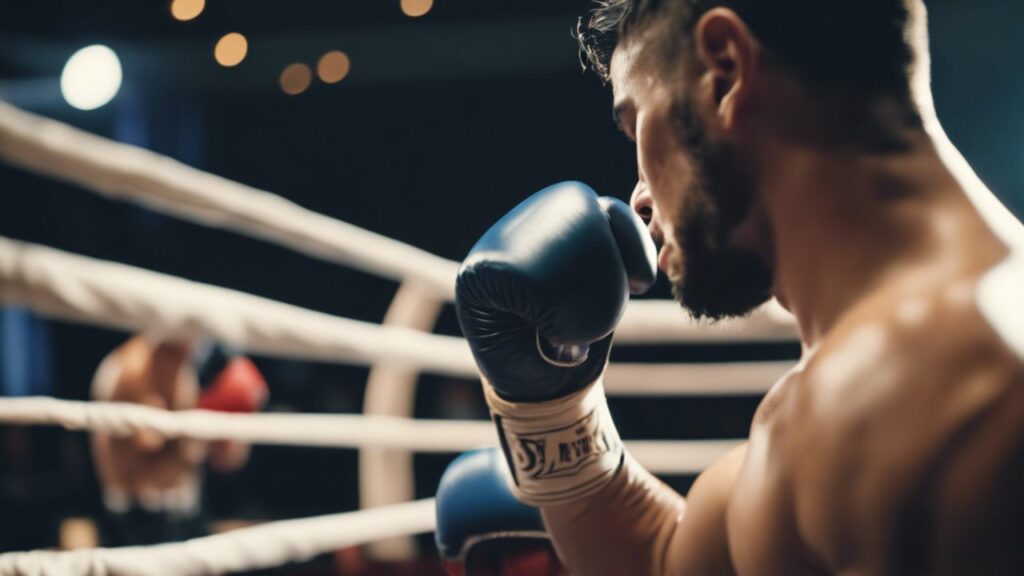
As these inspiring athletes have proven, short height is no barrier to success in boxing. Triumphs of stature celebrate the greatness achieved by short boxers, dispelling the notion that boxing is only for tall guys.
Discover how these fighters defied stereotypes and conquered the ring through their determination, skill, and unwavering spirit.
Being vertically challenged might seem like a disadvantage in boxing, where height and reach are often considered vital. But as history has shown us, stature is not the sole determinant of success in the ring.
Short boxers have repeatedly defied the odds and achieved greatness with skill, speed, and tenacity.
Let’s delve into the stories of some iconic short boxers who have triumphed in the sport:
The “Manassa Mauler”: Jack Dempsey
- Standing at just 6 feet 1 inch, Jack Dempsey might not be the shortest boxer on this list, but he still faced opponents with significant height advantages throughout his career.
- Dempsey revolutionized the heavyweight division with his aggressive fighting style and relentless punching power, earning him the nickname “Manassa Mauler.”
- His most notable triumph came in 1919 when he defeated the towering Jess Willard, who stood at 6 feet 6 inches, to claim the heavyweight title.
The “Greatest Of All Time”: Muhammad Ali
- Standing at 6 feet 3 inches tall, Muhammad Ali was not the shortest boxer in the heavyweight division, yet his speed, grace, and unorthodox style made him a standout fighter.
- Ali’s incredible footwork and lightning-fast punches allowed him to dominate opponents much taller than him, including the 6 feet 6 inches Sonny Liston and the 6 feet 5 inches George Foreman.
- Regarded as the “greatest of all time,” Ali’s achievements in and out of the ring solidify him as one of the most iconic short boxers in history.
The “Pocket Rocket”: Manny Pacquiao
- Standing at just 5 feet 5 inches, Manny Pacquiao is one of the shortest boxers to have competed at the elite level.
- Pacquiao’s lightning-quick hand speed, explosive power, and relentless aggression have propelled him to greatness in multiple weight divisions.
- Throughout his career, Pacquiao has faced opponents much taller and bigger than him, proving that size is not a determining factor of success in the ring.
The “Mexican Legend”: Julio Cesar Chavez
- Standing 5 feet 7 inches, Julio Cesar Chavez is regarded as one of Mexico’s greatest boxers.
- Chavez’s relentless pressure, precise punching, and exceptional durability allowed him to overcome taller opponents and dominate the ring.
- With a career record of 107 wins and only 6 losses, Chavez’s legacy solidifies his place among the all-time greats, regardless of height.
The “Cinderella Man”: James J. Braddock
- At 6 feet 2½ inches, James J. Braddock was a towering presence in the heavyweight division, but his story of triumph against all odds is worth mentioning.
- Braddock, nicknamed the “Cinderella Man,” overcame injuries and personal hardships to become the world’s heavyweight champion.
- In 1935, Braddock defeated the towering Max Baer, who stood at 6 feet 2 inches, in a stunning upset to claim the title.
In boxing, height may provide certain advantages, but it does not determine the outcome of a fight. These short boxers have repeatedly proven that skill, determination, and heart can overcome any physical disadvantage. Their triumphs testify to the power of talent, strategy, and hard work in the sport.
Training Strategies to Empower Short Boxers
Short boxers can excel in the ring through effective training strategies that enhance their speed, agility, and defensive skills. With a focus on maximizing their strengths, boxing proves to be a beneficial sport for shorter individuals.
Being a shorter boxer doesn’t mean you can’t excel in the ring. With the right training strategies, short boxers can maximize their speed, agility, and defensive prowess, making them formidable opponents.
Here are some techniques and tips to help empower shorter fighters in the ring:
Footwork and Agility Training
- Focus on developing quick footwork to maneuver around taller opponents effectively.
- Practice ladder drills to improve agility, speed, and coordination.
- Work on pivoting, side-to-side movement, and changing directions swiftly to avoid punches.
- Incorporate agility training exercises into your routine, such as a ladder, cone, or hurdle drills.
Speed Enhancement Techniques
- Utilize speed bags and double-end bags to enhance hand speed and reflexes.
- Implement shadow boxing drills focused on speed and throwing combinations quickly and efficiently.
- Use resistance bands to develop explosive speed and improve punches’ acceleration.
- Incorporate interval training in your workouts to increase overall speed and endurance.
Defensive Strategies
- Learn the art of slipping, bobbing, and weaving to avoid incoming punches.
- Focus on head movement and upper body defense to lessen the impact of punches.
- Practice proper stance and positioning to minimize the target area for opponents.
- Utilize counter-punching techniques to catch taller opponents off guard.
Body Mechanics and Core Strength
- Strengthen your core through exercises like planks, Russian twists, and medicine ball throws.
- Develop solid legs and hips to generate power and stability in your punches.
- Work on building upper body strength to increase punching force and endurance.
- Incorporate resistance training exercises like push-ups, pull-ups, and dumbbell presses.
Mental and Psychological Preparation
- Build mental toughness and resilience through visualization exercises and positive self-talk.
- Practice remaining calm under pressure and maintaining focus during fights.
- Study and analyze opponents to anticipate their moves and identify weaknesses.
- Develop a winning mindset, believing in your abilities and capitalizing on your strengths.
These training strategies allow short boxers to maximize their speed, agility, and defensive prowess, leveling the playing field against taller opponents.
Remember, height may offer advantages, but short boxers can succeed in the ring with the proper training, technique, and mental preparation.
So, lace up your gloves and use these strategies to empower yourself as a shorter boxer!
Overcoming Height Stereotypes and Boxing Challenges
Being a shorter individual in boxing can come with its fair share of challenges and stereotypes. However, it’s important to remember that height should never determine one’s capability or potential as a boxer. Short guys can flourish in the ring with the right mindset, training, and strategy.
This section will explore overcoming height stereotypes and navigating boxing challenges as a shorter boxer.
Training Techniques for Short Boxers
Footwork and agility:
- Develop fast footwork to close the distance with opponents quickly.
- Work on agility drills to enhance speed and evade attacks effectively.
- Utilize lateral movements to create angles and find openings.
Defensive skills:
- Master the art of slipping and rolling punches to avoid getting hit.
- Build good upper body movement to throw off opponents’ timing.
- Focus on developing solid reflexes to counter incoming attacks.
Inside fighting:
- Shorter fighters excel at close-range combat due to their lower center of gravity.
- Work on infighting techniques such as hooks, uppercuts, and body shots.
- Develop the ability to smother opponents’ punches and effectively land powerful strikes.
Strategic Approaches for Short Boxers
Utilize speed:
- Capitalize on your agility and quickness to outmaneuver taller opponents.
- Focus on rapid combinations to overwhelm and confuse your adversaries.
- Don’t allow a taller opponent to settle into a rhythm; keep them off balance with constant movement and speed.
Target body shots:
- Aim for the body, particularly the ribs and midsection of taller opponents.
- Landing powerful shots at the body can hinder mobility and sap their energy.
- Consistently attacking the body can create opportunities for effective headshots.
Close the distance:
- Establish strong inside fighting skills to counter the reach advantage of taller boxers effectively.
- Learn to close the distance quickly and apply pressure to negate their height advantage.
- You can utilize shorter, more compact punches to deliver maximum impact by getting inside.
Intelligent defense:
- Develop a smart defensive strategy to minimize the effects of a longer reach.
- Use head movement, good footwork, and effective blocking techniques to evade punches.
- Study your opponent’s reach and timing, adapting to their style to counter effectively.
Building Mental Strength
Confidence and self-belief:
- Embrace your height and focus on your strengths as a shorter boxer.
- Recognize that height does not define your ability or success in the sport.
- Cultivate a strong mindset and believe in your skills to overcome doubts or stereotypes.
Adaptability and strategy:
- Be adaptable and willing to adjust your approach based on your opponent’s style and strengths.
- Develop a game plan that maximizes your attributes while exploiting any weaknesses in your opponent.
- Stay mentally sharp and make quick decisions in the ring.
Embracing Opportunities
As a shorter boxer, embracing opportunities and seeking matches where your skills can shine is crucial. While height may present challenges, it has advantages such as speed, agility, and a lower center of gravity.
Short guys can thrive in boxing by leveraging these strengths and employing effective training techniques and strategies.
Remember, success in boxing is not solely determined by height but by the dedication, skill, and tenacity you bring to the ring.
Navigating Weight Classes
Boxing is an excellent sport for short guys, offering a level playing field in weight classes. Find the perfect fit for your boxing journey and excel in the ring.
When it comes to boxing, finding the right weight class is crucial for short guys looking to excel in the sport. Although height may not be on your side, there are weight divisions that cater to fighters of all sizes.
So, let’s dive into the world of weight classes and explore how you can find the perfect fit for your boxing journey.
Understanding Weight Classes
- Flyweight: This weight class ranges from 108 pounds to 112 pounds. It is one of the lightest weight divisions and generally suits shorter boxers who excel in speed and agility.
- Bantamweight: Fighters in this weight class weigh between 115 and 118 pounds. Bantamweight allows short boxers to showcase their quickness and power with equal prowess.
- Featherweight: Boxers in the featherweight division weigh between 122 and 126 pounds. This weight class is ideal for shorter fighters who possess solid punching power.
- Lightweight: Ranging from 130 pounds to 135 pounds, the lightweight division offers short boxers a chance to display their technical skills. Speed and agility are key in this weight class.
- Welterweight: Weighing in at 142 pounds to 147 pounds, welterweight is optimal for short guys who pack a punch. It combines power and speed, making it a balanced choice for shorter boxers.
- Middleweight: Middleweight fighters fall within the 153-pound to 160-pound range. Although taller opponents may be common in this division, shorter boxers with superior technique can excel.
Factors to Consider
- Style of fighting: Assess your boxing style. Are you an aggressive fighter who relies on power punches, or do you focus more on speed and precision? Considering your fighting style will help determine which weight class suits you best.
- Height & reach: Shortness doesn’t mean you can’t compete in higher-weight classes. However, it’s essential to consider the average height and reach of boxers in each division. Assess whether your height and reach match up with potential opponents.
- Strength & stamina: Think about your overall strength and stamina levels. Moving up to a higher weight class may require you to bulk up and increase your strength while moving down may demand better endurance.
- Health & Safety: Prioritize your health and safety when choosing a weight class. Rapid weight cycling to drop or gain weight can severely affect your physical and mental well-being.
Finding the perfect weight class as a short fighter is about leveraging your strengths and maximizing your advantages.
By carefully considering the different weight divisions, understanding your style, and prioritizing your well-being, you can carve out a successful boxing journey that defies height stereotypes.
So, confidently step into the ring and show the world that boxing suits short guys!
Short Boxers Defying the Odds and Inspiring Success
Short boxers defy the odds and inspire success, proving that size doesn’t matter in the ring. Their determination and skill break stereotypes and show that boxing suits short guys.
Boxing, known for its intense physical demands, is often considered a sport dominated by tall and lanky fighters. However, short boxers have showcased their exceptional skills, defying the odds and inspiring others through remarkable personal triumphs.
Here, we delve into the world of short boxers and their successes, proving that height is not a defining factor in pursuing boxing excellence.
Overcoming Height: Proving Size Doesn’t Matter
Size is often deemed a disadvantage in boxing, but short boxers have demonstrated that skill and technique can surpass physical attributes:
- Mike Tyson: Standing at just 5’10”, Tyson dominated the heavyweight division with his explosive power and remarkable speed.
- Manny Pacquiao: At a height of 5’5″, Pacquiao is one of the greatest pound-for-pound fighters to step in the ring. His agility, lightning-fast punches, and relentless work ethic propelled him to multiple world titles in different weight divisions.
- Roberto Duran: The legendary Duran, standing 5’7″, possessed immense strength, impeccable defensive skills, and a tenacious fighting style that made him one of the greatest boxers of all time.
Inspirational Stories: The Triumph of Short Boxers
Short boxers have not only achieved tremendous success but have also overcome obstacles and inspired countless individuals along the way:
- Joe Calzaghe: Despite his height disadvantage (5’11”) in the super-middleweight division, Calzaghe remained undefeated throughout his professional career. His exceptional footwork, lightning-fast combinations, and indomitable spirit inspired many aspiring boxers.
- Prince Naseem Hamed: At just 5’4″, Hamed became a household name in the featherweight division. Known for his unique fighting style and flamboyant entrances, he captured the imagination of fans worldwide and left a lasting impact on the sport.
- Nonito Donaire: Standing at 5’5″, Donaire has conquered multiple weight classes with his explosive power and technical prowess. His perseverance and dedication to his craft continue to inspire aspiring boxers around the globe.
Lessons From Short Boxers: Determination and Skill Triumph
Short boxers teach us essential lessons that go beyond the realm of boxing, proving that physical attributes do not limit success:
- Dedication: Short boxers exemplify an unwavering commitment to their craft, training countless hours to perfect their skills and overcome any disadvantages.
- Adaptability: These boxers have mastered adapting to their opponents, utilizing their unique attributes and crafting effective strategies to defeat taller adversaries.
- Mental toughness: Overcoming physical disadvantages requires mental resilience, which these short boxers possess. They showcase unwavering belief in themselves and their abilities, turning their perceived weaknesses into strengths.
Height should never define potential, and the success of short boxers in the sport is a testament to this fact. Their triumphs and inspiring journeys have proven that determination, skill, and a never-give-up attitude can overcome obstacles.
So, for all the short guys with dreams of stepping into the boxing ring, take these stories as motivation and let them ignite the fire within you. Your height is just a number, but your determination can make you a champion.
Frequently Asked Questions
Is Boxing a Good Sport for Short Guys?
Boxing is a great sport for short guys because it focuses on agility, speed, and technique rather than height or reach. Shorter boxers have the advantage of being more elusive targets and can deliver powerful punches from close range. With the proper training and strategy, short guys can excel in the boxing ring.
Can Boxing Help Short Guys Build Muscle?
Absolutely! Boxing is a full-body workout that engages multiple muscle groups, helping short guys build strength and muscle mass. The high-intensity training and constant movement in boxing can increase muscle tone, improve endurance, and enhance overall fitness levels. Short guys can achieve a lean and muscular physique through regular boxing training.
Will Boxing Improve the Confidence of Short Guys?
Yes, boxing can significantly improve the confidence of short guys. Through consistent training and improvement of boxing skills, short guys can gain a sense of achievement, boost their self-esteem, and feel more confident in their physical abilities. Boxing also teaches discipline, mental focus, and mental toughness, contributing to increased confidence inside and outside the ring.
Conclusion
Boxing can be an excellent sport for short guys. It offers a range of physical and mental benefits that can help them excel inside and outside the ring. With its focus on speed, agility, and strategy, boxing allows short guys to use their compact stature to their advantage.
It builds strength and endurance, helps with balance and coordination, and works the entire body for a full-body workout. Additionally, boxing provides an outlet for stress and anger, promoting mental well-being. It boosts confidence and self-esteem, instilling a sense of discipline and determination.
Moreover, boxing offers a supportive and inclusive community where short guys can find like-minded individuals who share their passion for the sport.
So, if you’re a short guy looking to challenge yourself physically and mentally, give boxing a shot. Lace up those gloves and unleash your inner warrior.

